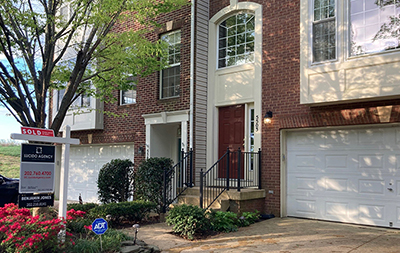
Existing Home Sales Up 3rd Straight Month

Existing home sales appear to be heating up again as the year ends, the National Association of Realtors reported Wednesday.
The report said November existing home sales rose by 1.9% from October to a seasonally adjusted annual rate of 6.46 million. From a year ago, sales fell by 2 percent. Single-family home sales rose to a seasonally adjusted annual rate of 5.75 million in November, up 1.6% from 5.66 million in October but down 2.2% from one year ago. The median existing single-family home price rose to $362,600 in November, up 14.9% from November 2020. Existing condominium and co-op sales rose to a seasonally adjusted annual rate of 710,000 units in November, up 4.4% from 680,000 in October and unchanged from one year ago. The median existing condo price rose to $283,200 in November, an annual increase of 4.4%.
Three of the four major U.S. regions reported growth in monthly sales, while the fourth region held steady in November. From a year-over-year perspective, only one region experienced a rise in sales as the three others saw home sales decline.
Sales in the South rose by 2.9% in November to an annual rate of 2,850,000, up by 1.1% from one year ago. The median price in the South rose to $318,900, up 18.4% from a year ago. Sales in the West increased by 2.3% to an annual rate of 1,330,000 in November, but fell by 3.6% from one year ago. The median price in the West rose to $507,200, up 8.4% from a year ago.
Sales in the Northeast were flat compared to the prior month at an annual rate of 760,000, an 11.6% decrease from a year ago. The median price in the Northeast rose to $372,500, up 4.7% from one year ago. Sales in the Midwest rose by 0.7% to an annual rate of 1,520,000 in November, but fell by 0.7% from a year ago. The median price in the Midwest rose to $260,100, a 9.0% jump from a year ago.
“Existing home sales increased for the third straight month to a robust 6.46 million pace in November, another indication that the housing market is closing the year on strong footing,” said Joel Kan, Associate Vice President of Economic and Industry Forecasting with the Mortgage Bankers Association. “The annualized sales pace saw the strongest reading since January 2021, but was also accompanied by a 10% drop in for-sale inventory. The 1.1 million units for sale is less than half of the historical average.”
“Supply chain bottlenecks and labor shortages have slowed the pace of new home completions, which has reduced overall housing inventories and further intensified the race for existing homes,” said Mark Vitner, Senior Economist with Wells Fargo Economics, Charlotte, N.C. “Homes continue to sell at a blistering pace.”
“Determined buyers were able to land housing before mortgage rates rise further in the coming months,” said Lawrence Yun, NAR chief economist. “Locking in a constant and firm mortgage payment motivated many consumers who grew weary of escalating rents over the last year.
NAR said total housing inventory at the end of November fell to 1.11 million units, down 9.8% from October and down 13.3% from one year ago (1.28 million). Unsold inventory sits at a 2.1-month supply at the current sales pace, a decline from both the prior month and from one year ago.
The median existing home price for all housing types in November rose to $353,900, up 13.9% from November 2020 ($310,800), as prices increased in each region, with the highest pace of appreciation in the South region. This marks 117 straight months of year-over-year increases, the longest-running streak on record.
“Supply-chain disruptions for building new homes and labor shortages have hindered bringing more inventory to the market,” said Yun. “Therefore, housing prices continue to march higher due to the near record-low supply levels.”
The report said properties typically remained on the market for 18 days in November, equal to October and down from 21 days a year ago. Eighty-three percent of homes sold in November were on the market for less than a month.
“This swift competition continues to exert upward pressure on sales prices, overall home-price growth, and is impacting prospective first-time buyers,” Kan said. “They continued to struggle reaching the market.”
NAR said first-time buyers represented 26% of sales in November, down from 29% in October and from 32% a year ago. Individual investors or second-home buyers purchased 15% of homes in November, down from 17% in October and up from 14% a year ago. All-cash sales accounted for 24% of transactions in November, equal to October’s percentage, and up from 20% from a year ago.
Distressed sales represented less than 1% of sales in November, unchanged from October and a year ago.
“The U.S. Census Bureau’s recent release on housing starts indicated a surge in new construction and permitting activity in November, which will hopefully start to help ease the housing supply shortages the market is facing,” Kan said.
